Overview
This article elucidates how startups can effectively evaluate their growth by leveraging workforce data through a structured five-step process. It underscores the significance of key metrics, historical trends, and industry benchmarks, while emphasizing the synthesis of insights for strategic decision-making. Ultimately, this approach empowers startups to make data-driven decisions that not only foster growth but also enhance employee performance.
Introduction
Understanding the dynamics of workforce data is crucial for startups aiming for sustainable growth in a competitive landscape. Evaluating employee performance, engagement, and turnover rates allows new businesses to uncover valuable insights that directly influence their success. But how can startups effectively harness this data to not only track their growth but also identify areas for improvement? This article explores five essential steps that guide startups in leveraging workforce data to enhance their growth strategies and make informed decisions that drive success.
Understand Workforce Data and Its Importance for Startup Growth
Workforce information is a critical collection of details regarding employees, encompassing their performance, engagement levels, and turnover rates. Understanding this information is essential for new businesses, as it allows them to , providing vital insights into how effectively employees contribute to overall company goals.
Startups often navigate dynamic environments where rapid growth can present challenges in managing human resources. By leveraging employee information, new businesses can evaluate startup growth with workforce data to identify strengths and weaknesses within their teams, enabling informed decisions that foster growth.
Key elements of personnel information, such as employee productivity, satisfaction, and retention rates, are essential to evaluate startup growth with workforce data, as they serve as indicators of a new business's health and potential for expansion.
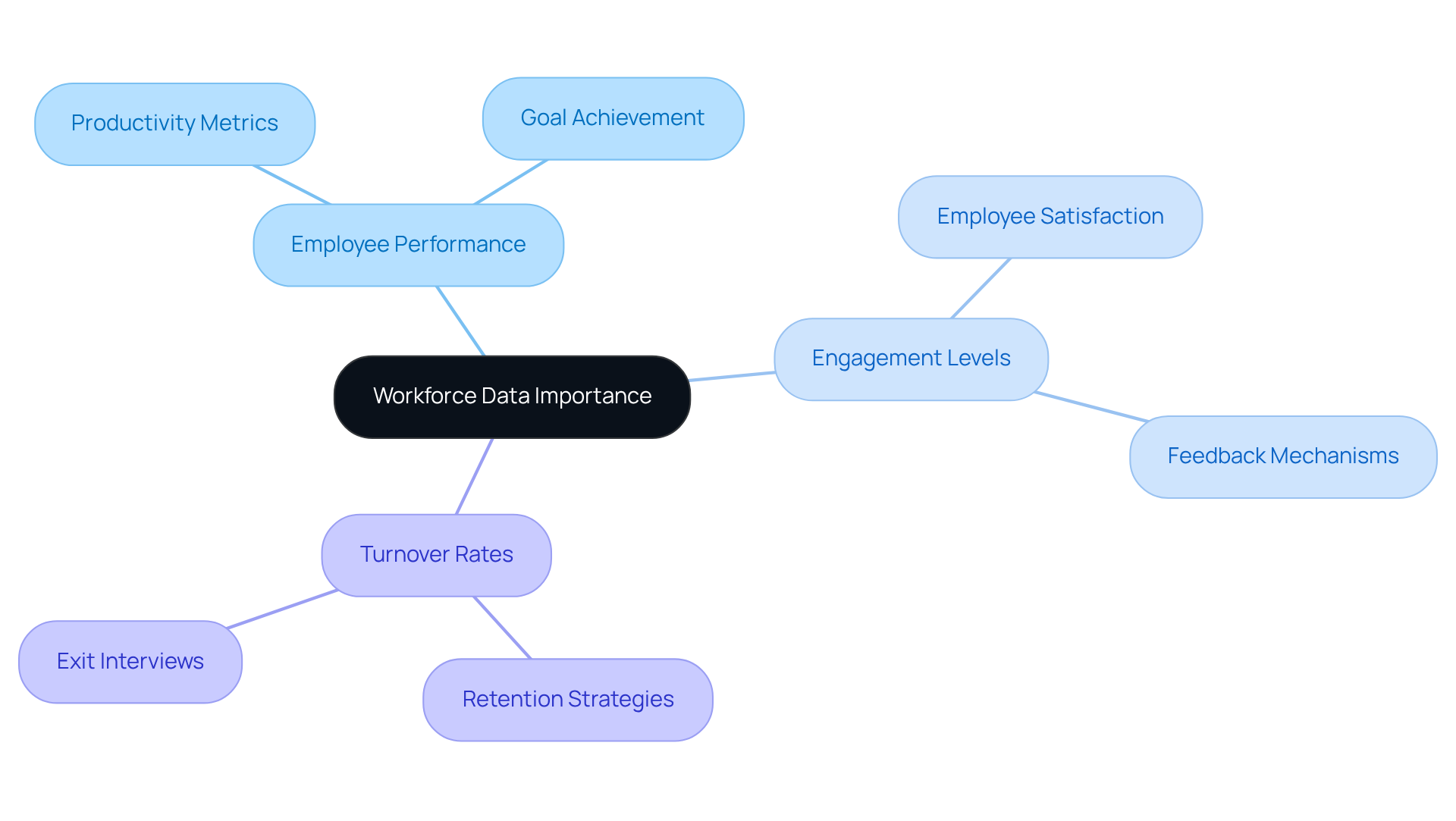
Identify Key Workforce Metrics for Evaluation
To effectively with workforce data, it is crucial to identify key metrics that align with business goals. Consider the following important metrics:
- Employee Productivity: Measure output per employee to evaluate efficiency.
- Employee Engagement: Utilize surveys to gauge morale and commitment, as these factors significantly influence retention and overall effectiveness.
- Turnover Rate: Analyze the rate at which employees leave the organization; a high turnover rate can signal underlying issues that need addressing.
- Time to Hire: Evaluate the efficiency of your recruitment process, which directly impacts your ability to scale.
- Training and Development Metrics: Assess the effectiveness of training programs in enhancing employee skills.
By focusing on these metrics, startups can evaluate startup growth with workforce data to better understand their team's effectiveness and its direct influence on growth.
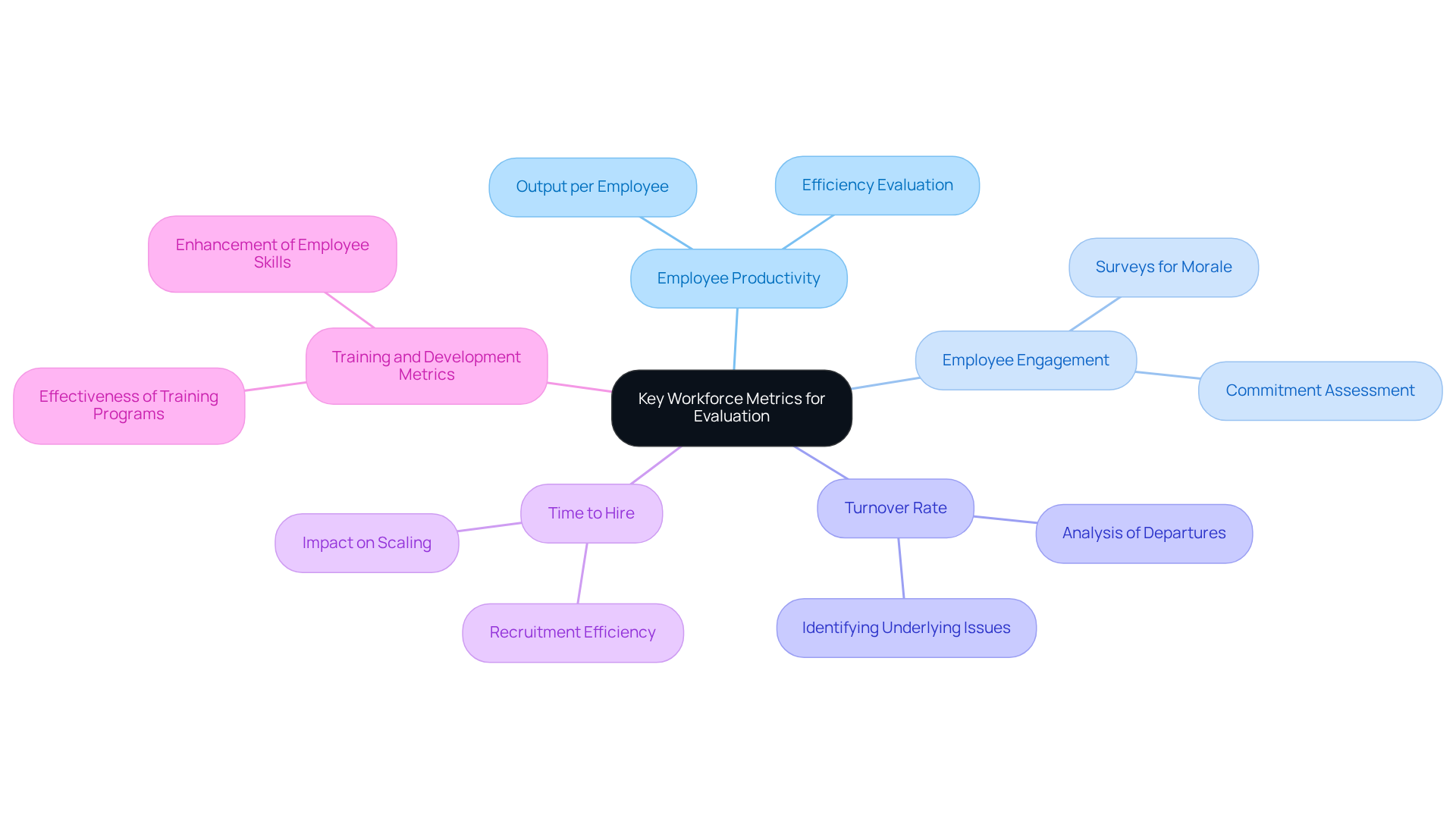
Analyze Historical Workforce Data Trends
Upon identifying key metrics, the subsequent step involves a thorough examination of historical employee trends. This process requires over a specified timeframe to discern shifts and patterns in employee effectiveness. Start by collecting data from diverse sources, including HR systems and employee surveys. Focus on identifying trends in:
- Productivity Levels: Are they witnessing an upward or downward trajectory over time?
- Employee Engagement Scores: What changes have occurred, and which events may have impacted these scores?
- Turnover Rates: Are there distinct periods marked by higher turnover, and what factors contributed to these fluctuations?
By comprehending these trends, emerging businesses can evaluate startup growth with workforce data to formulate informed predictions regarding future employee effectiveness and adapt their strategies accordingly.
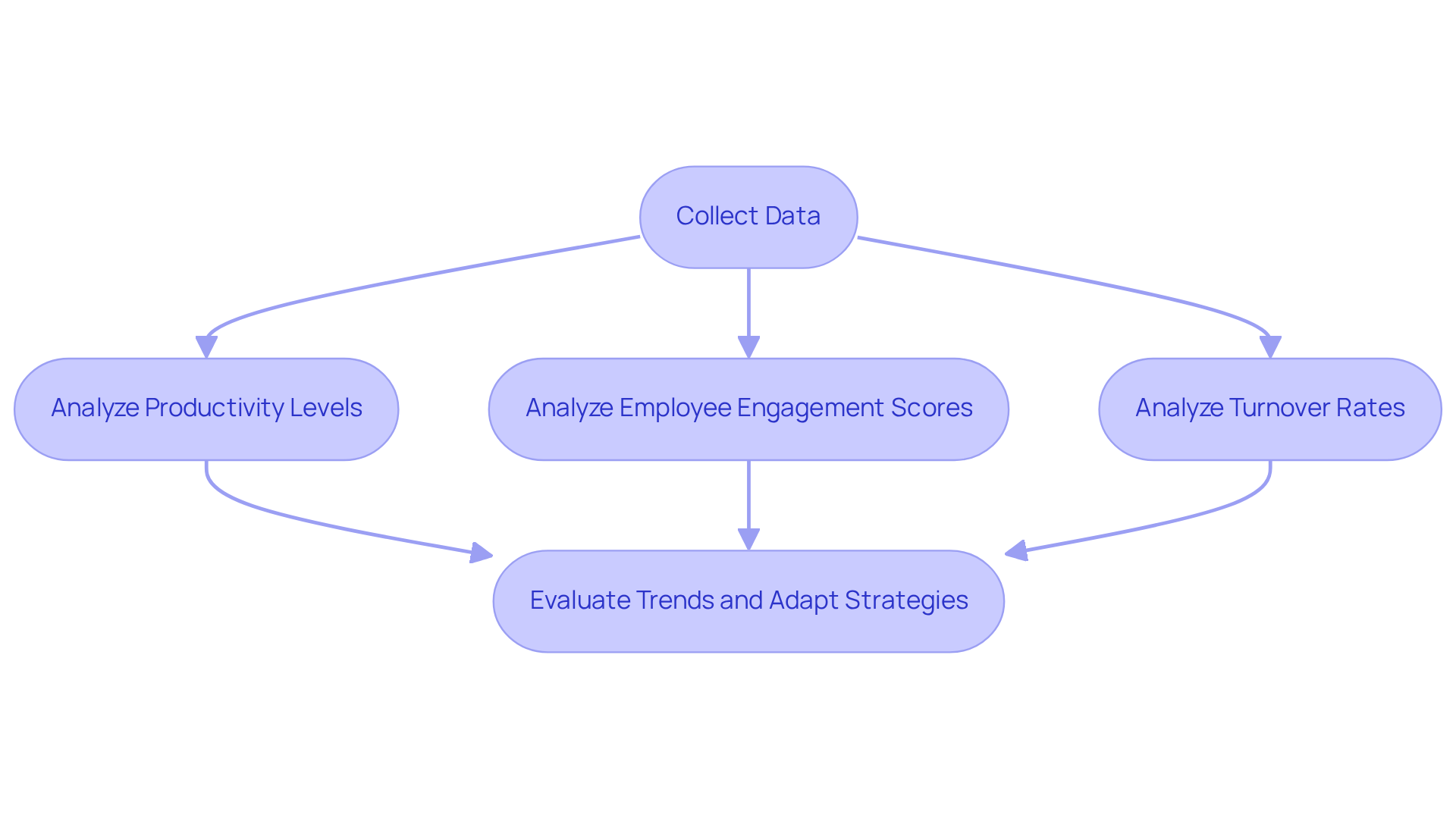
Compare Workforce Data Against Industry Benchmarks
To achieve a comprehensive understanding of workforce performance, comparing your data against is crucial. This comparison reveals areas where your business excels or needs improvement. Begin by researching industry standards for the key metrics identified earlier. Consider the following:
- Average Employee Productivity: How does your team's output measure up?
- Industry Engagement Levels: Are your engagement scores above or below the average?
- Turnover Rates: What is the industry standard, and how does your new venture compare?
This comparative analysis empowers new ventures to identify performance gaps and develop targeted strategies to enhance employee effectiveness.
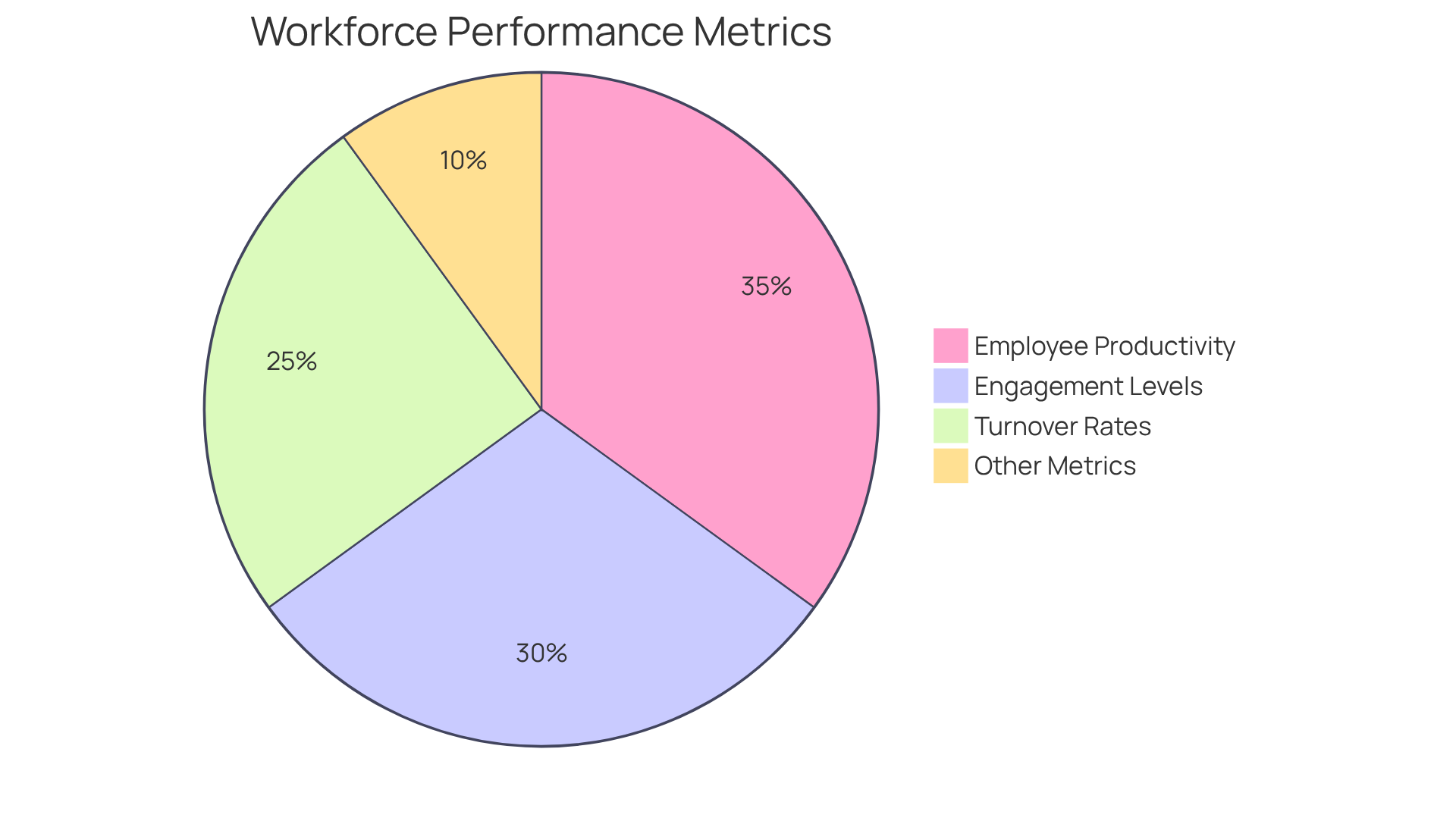
Synthesize Insights for Strategic Decision-Making
The final step to evaluate startup growth with workforce data is synthesizing insights into strategic decision-making. Begin by summarizing key findings from your metrics, trends, and benchmark comparisons. Consider the following aspects:
- Identify Strengths: Assess which areas of your workforce are excelling and contributing positively to your objectives. Data indicates that AI is predicted to boost employee productivity by 30%, highlighting the potential of utilizing technology to enhance efficiency.
- Recognize Weaknesses: Pinpoint gaps that require attention, whether in skills, effectiveness, or resource allocation. A significant percentage of tech recruiters acknowledge bias in hiring, which can adversely affect employee diversity and effectiveness.
- Develop Action Plans: Utilize your insights to formulate targeted strategies aimed at enhancing employee performance. This may involve refining recruitment processes, enhancing training programs, or implementing new technologies to streamline operations. Notably, 73% of those using AI report increased productivity, underscoring the value of integrating advanced tools into your strategy.
By effectively synthesizing these insights, startups can evaluate startup growth with workforce data to make informed, data-driven decisions that align with their growth objectives. This approach not only fosters but also positions the organization for sustained success in a competitive landscape. For instance, the "Impact of the Pandemic on Women in Tech" case study illustrates how understanding workforce dynamics can lead to better retention strategies and improved workplace culture.
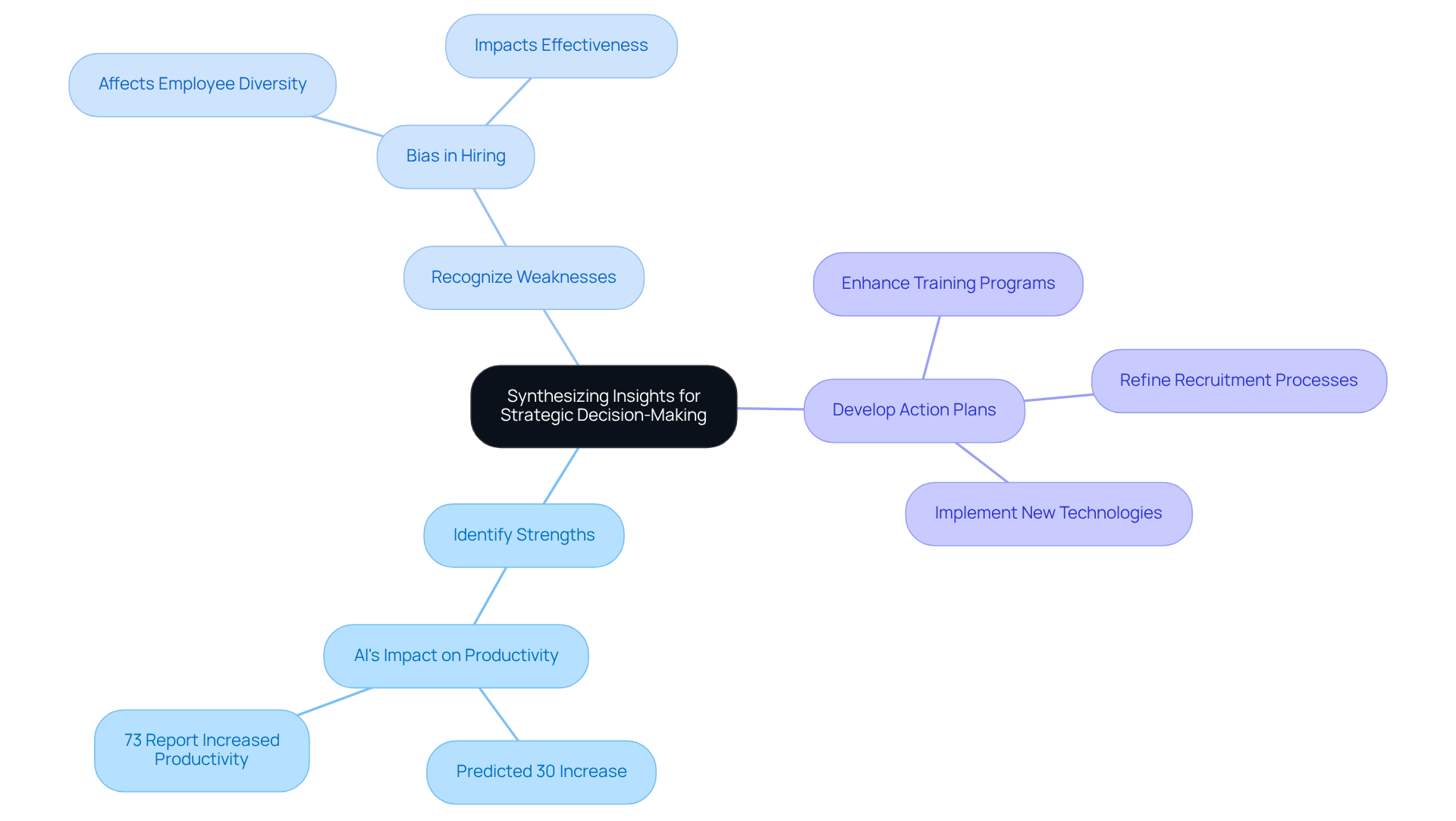
Conclusion
Understanding and leveraging workforce data is pivotal for startups aiming to achieve sustainable growth. By evaluating key metrics and trends, businesses can gain valuable insights into employee performance and engagement, crucial for aligning human resources with overall company objectives. The effective use of workforce data aids in identifying strengths and weaknesses, empowering startups to make informed decisions that drive success.
The article emphasizes several critical steps in this evaluation process. It highlights the importance of identifying key workforce metrics such as:
- Productivity
- Engagement
- Turnover rates
- Training effectiveness
Analyzing historical data trends allows startups to recognize patterns that can inform future strategies, while benchmarking against industry standards reveals areas for improvement. Synthesizing these insights into actionable plans enables startups to enhance performance and foster a culture of continuous growth.
Ultimately, the significance of workforce data in evaluating startup growth cannot be overstated. Startups are encouraged to embrace data-driven decision-making as a fundamental component of their strategy. By doing so, they position themselves not only to navigate the challenges of rapid growth but also to thrive in a competitive landscape. The call to action is clear: invest in workforce analytics and harness the power of data to unlock the full potential of your team, ensuring a robust foundation for future success.
Frequently Asked Questions
What is workforce data and why is it important for startup growth?
Workforce data is a collection of details regarding employees, including their performance, engagement levels, and turnover rates. It is important for startup growth as it provides insights into how effectively employees contribute to overall company goals and helps evaluate the health and potential for expansion of the business.
How can startups leverage workforce data?
Startups can leverage workforce data to identify strengths and weaknesses within their teams, make informed decisions, and foster growth. This data helps navigate the challenges of rapid growth in dynamic environments.
What are key elements of workforce information that indicate startup health?
Key elements include employee productivity, satisfaction, and retention rates. These metrics serve as indicators of a startup's health and its potential for expansion.
What are the important metrics for evaluating startup growth with workforce data?
Important metrics include: - Employee Productivity: Measures output per employee to evaluate efficiency. - Employee Engagement: Gauges morale and commitment through surveys. - Turnover Rate: Analyzes the rate at which employees leave the organization. - Time to Hire: Evaluates the efficiency of the recruitment process. - Training and Development Metrics: Assesses the effectiveness of training programs in enhancing employee skills.
How do these metrics influence startup growth?
By focusing on these metrics, startups can better understand their team's effectiveness and its direct influence on growth, allowing for strategic adjustments that support expansion.




